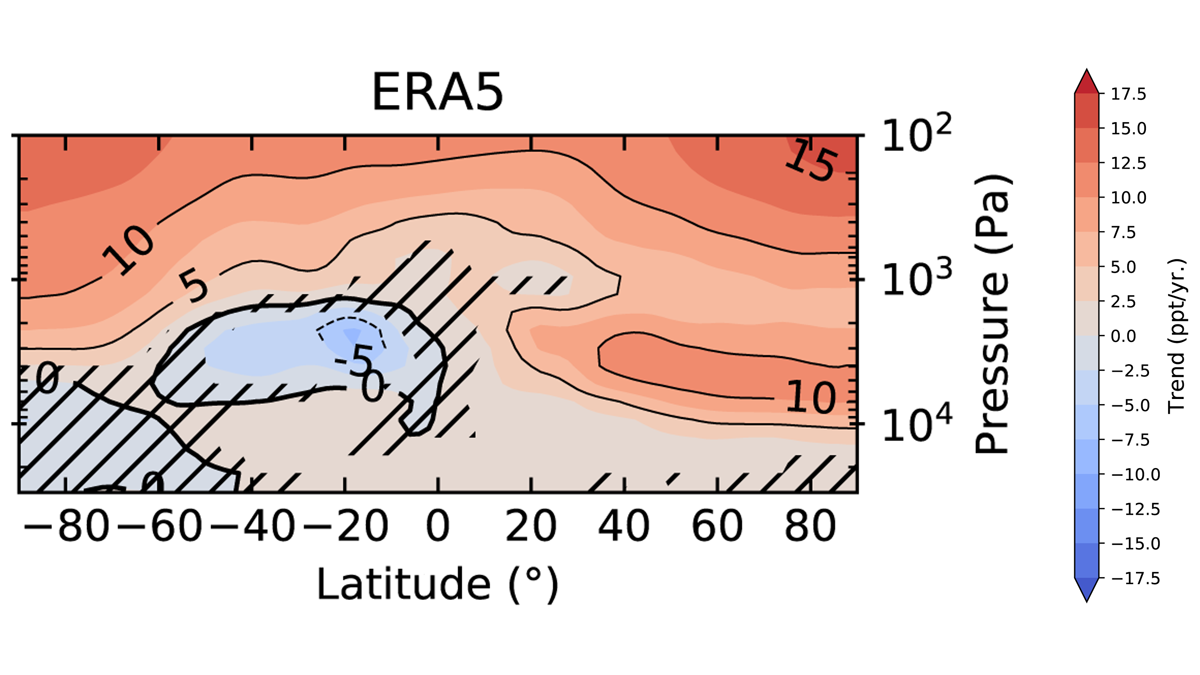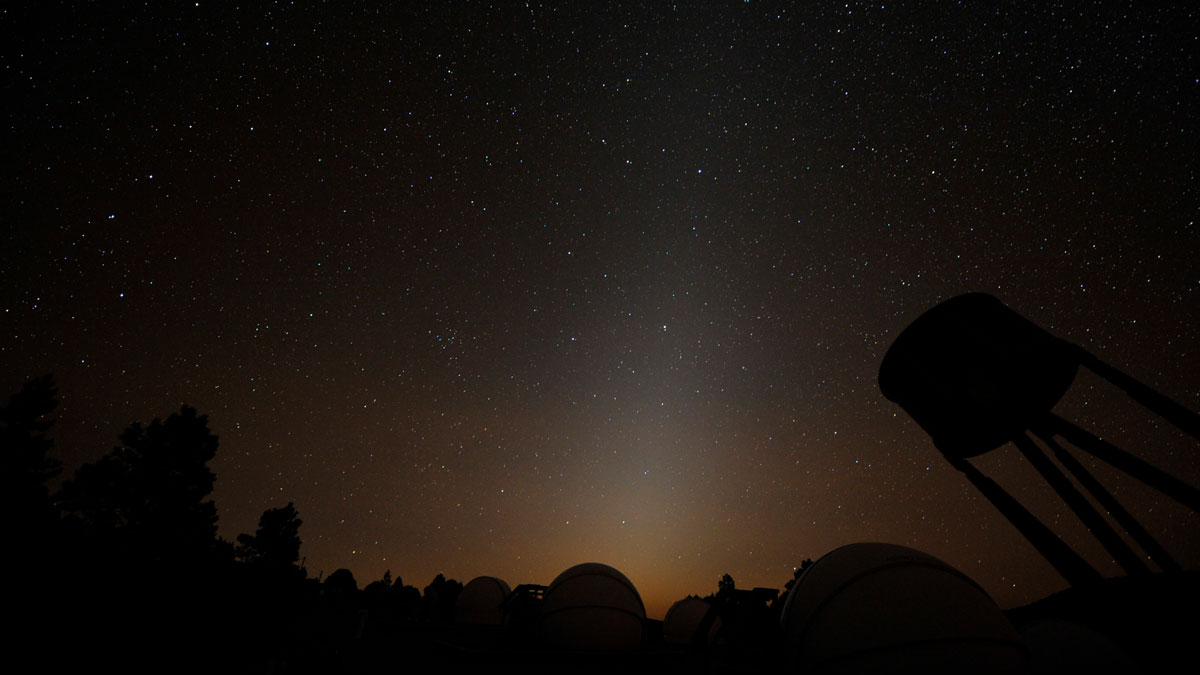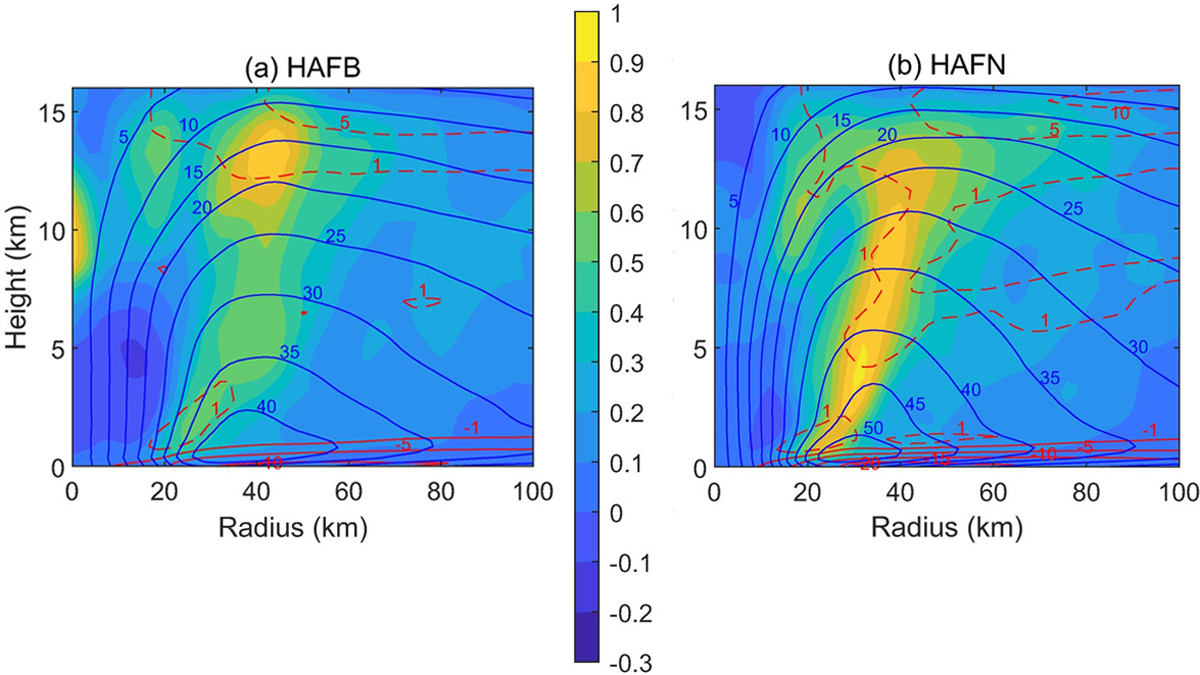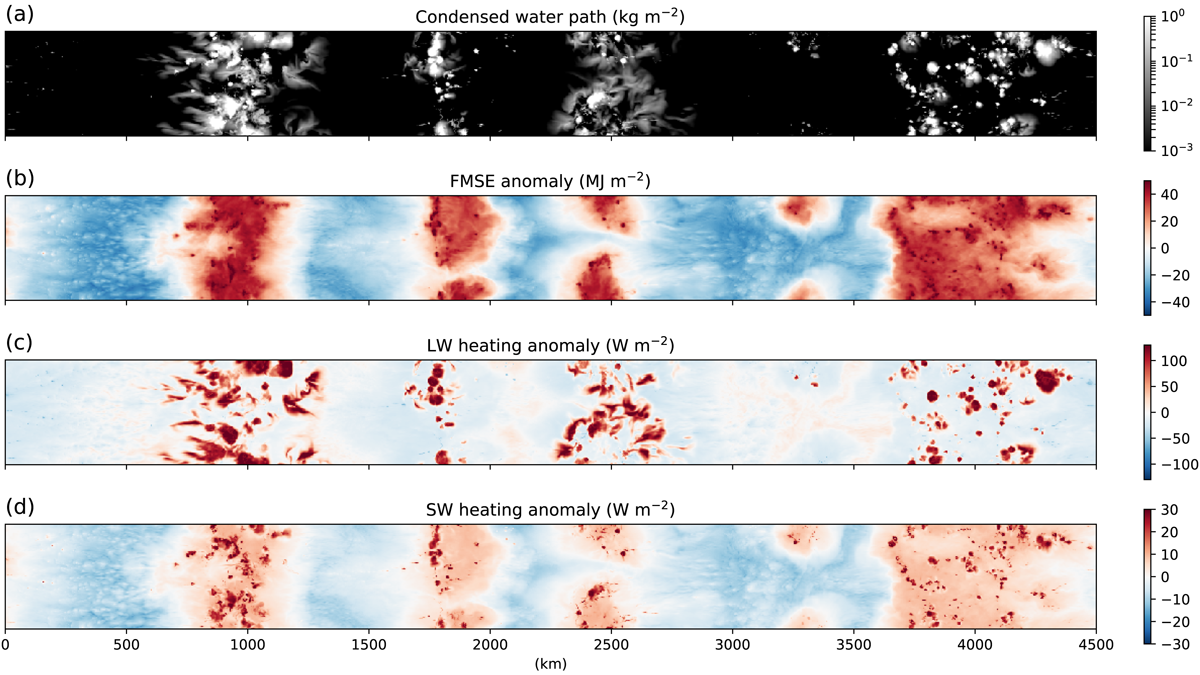Smoke from wildfires burning in the western United States carries harmful pollutants across the country.
everything atmospheric
New Insights on Stratospheric Circulation from Fluorine Tracers
Stratospheric fluorine species have accumulated faster in the Northern Hemisphere over the past two decades reflecting interhemispheric differences in the Brewer-Dobson transport circulation.
Cosmic Dust May Be Key Source of Phosphorus for Life on Earth
When tiny particles enter Earth’s atmosphere, a newly described series of chemical reactions may lead to production of phosphorus-containing molecules that are essential for biological processes.
Stratospheric Balloons Listen In on Ground Activity
Solar-powered hot-air balloons, floating 2.5 times as high as Mount Everest, detected a buried explosion more clearly than ground-based sensors did.
A Transition Zone Below Jupiter’s Clouds
The microwave radiometer aboard NASA’s Juno spacecraft reveals the hidden atmospheric circulations at work deep below Jupiter’s colorful clouds.
Hurricane Forecast Improvement with Better Turbulent Processes
A new look at turbulent processes has improved the prediction of hurricane rapid intensification by properly accounting for the unique environment of a hurricane eyewall.
Supercell Thunderstorms Shake Up the Stratosphere
Supercell storm tops may act like mountains that obstruct winds, transforming their flow into violent turbulence that mixes near-surface air with the stratosphere above.
An Eye in the Sky Tracks Air Pollution Inequality in U.S. Cities
A new study uses its data to show that diesel traffic is the largest source of pollution inequality across racial and economic divides
Importance of High Clouds and Moisture in Rainstorm Aggregation
A study of the impacts of radiative interactions with different cloud types on aggregation of rainstorms finds that interactions with high-clouds and water vapor are key.
New Insights into Polar Stratospheric Clouds
New satellite observations of polar stratospheric clouds have advanced our understanding of how, when, and where they form, their composition, and their role in ozone depletion.










